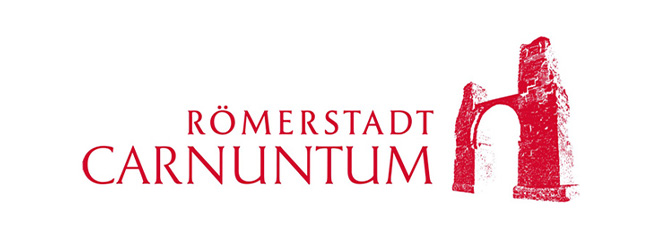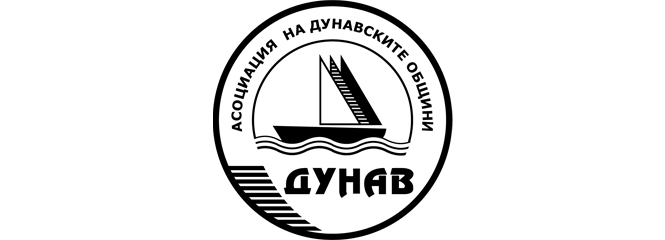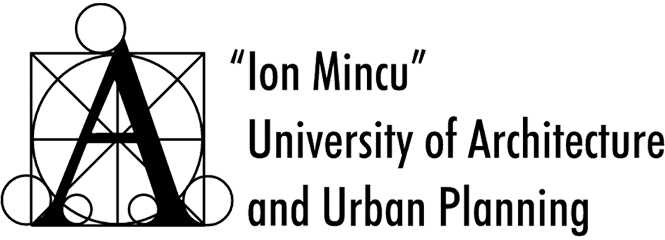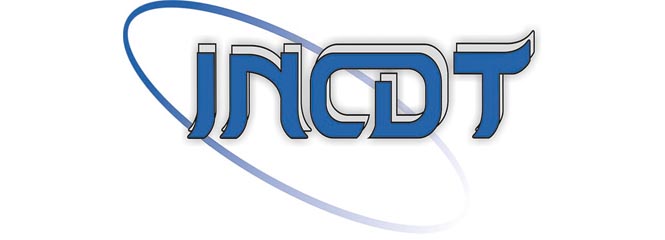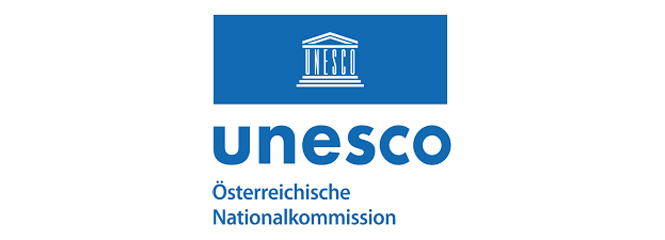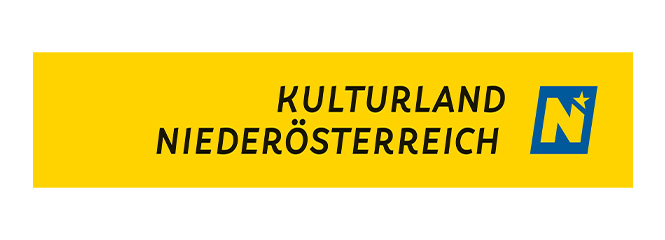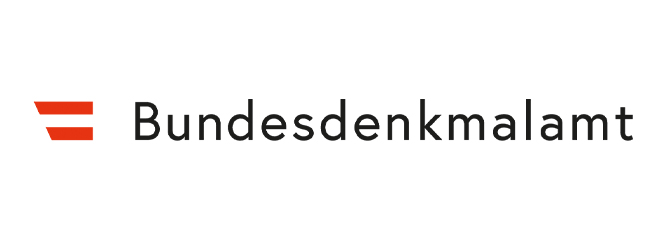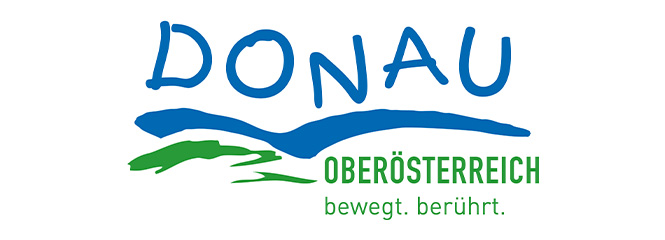The project partnership includes a total of 54 institutions (19 project partners and 35 associated strategic project partner organisations) from 11 European countries. The diverse consortium consists of universities, research institutions, museums, municipalities, regional authorities, and other organisations that contribute their various expertise and work together on the implementation of the project.
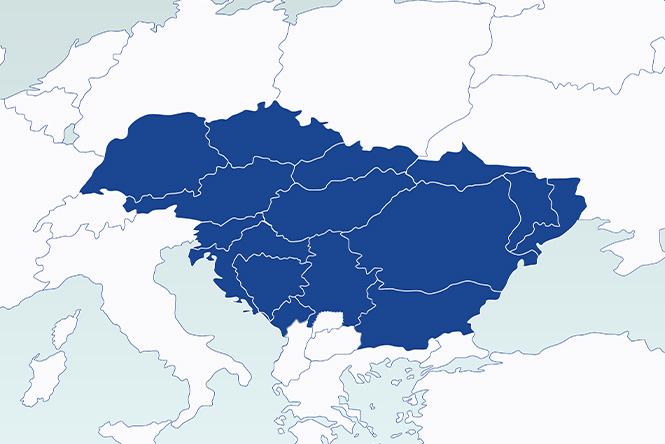
PROJECT COORDINATOR
Center for Cultural Property Protection – University for Continuing Education Krems (UWK), Austria
The University for Continuing Education Krems is a public university for academic continuing education with a research focus on current and future societal challenges. Located in the UNESCO World Heritage cultural landscape Wachau, it attaches great importance to the respectful and sustainable treatment of cultural heritage. With its Center for Cultural Property Protection, it has special expertise and extensive experience in the protection of cultural heritage from (climate-related) natural disasters and in cost-effective precautionary measures for movable and immovable cultural property. The Center takes a holistic approach, collaborating with high-level professors, institutions and educators in the field of risk management and cultural property protection, and drawing on a broad network of international stakeholders in the field of material cultural heritage. There is close cooperation with the Austrian Armed Forces as well as with national and international, governmental and non-governmental institutions in the field of cultural property protection, such as UNESCO, ICCROM and ICOMOS. In addition to its extensive range of courses, the Center also conducts prototype exercises for the protection of cultural property.
Project Partners
Universalmuseum Joanneum (UMJ), Austria
The UMJ is Austria's oldest and second-largest museum, housing approximately 4.5 million objects. For over 200 years, the Department of Archaeology & Coin Cabinet has been dedicated to the study of archaeological monuments, having collected over 40,000 finds, some of which are exhibited at Eggenberg Palace in Graz. The museum is also responsible for the significant Roman site Flavia Solva. With highly qualified staff and extensive knowledge, the UMJ develops innovative approaches to the protection and presentation of archaeological heritage.
Carnuntum (Lower Austria) was a significant Roman metropolis from the 1st to the 4th century AD, located at the frontier of the Roman Empire. Due to its strategically important position for border security and proximity to major trade routes, it developed into the capital of the province of Upper Pannonia. With 130 years of experience in research and preservation, the Roman City of Carnuntum offers a unique experience of history and scientific research: a fully functional Roman city quarter with original streets and reconstructed ancient houses, amphitheater, the Heidentor, and the Museum Carnuntinum bring antiquity to life. The Roman City of Carnuntum promotes multilingualism and barrier-free access and develops innovative presentation technologies such as virtual reality for smartphones. Since 2021, the Roman City of Carnuntum has been part of the UNESCO World Heritage 'Frontiers of the Roman Empire – The Danube Limes (Western Segment).'"
Асоциация на дунавските общини „Дунав“ | Association of Danube River Municipalities “Danube” (ADRM), Bulgaria
The ADRM was founded in 1993 by nine Bulgarian municipalities as an association of Danube municipalities. Its objecitve is to promote regional development and cooperation in the areas of tourism, transport, environment, energy, social and economic development, research and innovation, education, good governance, and security. Together with partner institutions from Bulgaria and Romania, two cross-border tourism routes have been developed that cover the Danube region of both countries. These initiatives have significantly contributed to socio-economic development and the strengthening of local capacities.
Българска асоциация за трансфер на технологии и иновации | Bulgarian Association for Transfer of Technology and Innovation (BATTI), Bulgaria
BATTI is an NGO that promotes innovation, technology, and digitization by connecting the public and private sectors and supporting knowledge transfer to small and medium-sized enterprises. It provides professional services to foster local economic development, entrepreneurial initiatives, and social projects. BATTI aims to encourage dialogue between private and public actors and to act as a mediator between the business, government, and non-governmental sectors.
ОБЩИНА БЕЛЕНЕ | Belene Municipality (Belene), Bulgaria
The municipality of Belene, situated on the Danube and nestled within protected areas, aims to promote its natural and cultural heritage through tourism activities. As part of the project, Belene will be a key point on the cultural route, highlighting the local Roman heritage. The planned measures support the sustainable development of the municipality by integrating economic, cultural, and tourism aspects, and will be promoted both nationally and globally.
Archeologický ústav Akademie věd České republiky, Brno | Institute of Archaeology of the Czech Academy of Sciences, Brno (ARUB), Czech Republic
ARUB is the only specialized institute in the Czech Republic that systematically studies the traces of the Roman army north of the Danube. For several decades, it has focused particularly on the central Roman military fortress at Hradisko near Mušov. In collaboration with partner institutions from Slovakia, Austria, and Germany, the institute also investigates Roman marching camps throughout the region. The research results are systematically evaluated and published in professional journals. Additionally, the institute is actively involved in the presentation of Roman monuments in South Moravia. ARUB possesses extensive expertise and experience in creating tangible and intangible offerings for cultural tourism, as well as the technical equipment of a leading research institution in the systematic study of the Romans.
Bayerische Landesamt für Denkmalpflege | Bavarian State Conservation Office (BLFD), Germany
The BLFD is responsible for site management of the Bavarian section of the UNESCO World Heritage 'Frontiers of the Roman Empire - The Danube Limes (Western Segment)' and works closely with stakeholders along the Danube Limes. Its expertise also includes the creation of strategic interpretation frameworks. The BLFD was a partner in the Creative Europe project 'ALApp' (2016-2019) and contributes the resulting smartphone application 'LIMES mobil' to the project.
The PSRDICLSG is responsible for promoting regional development in the Autonomous Province of Vojvodina as well as interregional cooperation. A central objective is to achieve EU standards to improve the quality of life for citizens in the region. It supports local self-governments through EU-funded grants and projects. Additionally, the PSRDICLSG is active in European and global networks and has successfully participated in numerous cross-border projects that enhance the region's tourism and cultural offerings.
Arheološki muzej u Zagrebu | Archaeological Museum in Zagreb (AMZ), Croatia
The Archaeological Museum in Zagreb, as the successor to the National Museum of 1836, is Croatia's leading archaeological institution with over 450,000 artifacts. Since the 1880s, it has conducted systematic excavations and offers a comprehensive collection from prehistory to the Middle Ages. The museum is divided into seven specialized departments and has a long tradition of scientific publications. It places great emphasis on public outreach and cultural education, utilizing modern technologies for immersive exhibitions and digital projects. Through partnerships and educational initiatives, it promotes the understanding and appreciation of archaeology and cultural heritage.
Kulturális Örökség Menedzserek Egyesülete | Association of Cultural Heritage Managers (KÖME), Hungary
Based in Budapest, KÖME was founded in 2012 and is dedicated to the preservation and utilization of cultural heritage through engaged communities. KÖME organizes programs and creates communication channels to discover and appreciate shared heritage. The association promotes national and international platforms that bring together experts from various fields to exchange ideas and realize projects. Thanks to its membership in the European Association for Heritage Interpretation, KÖME has experience collaborating with heritage sites in different countries. The focus is on connecting cultural heritage with communities, tourism, spatial development, digital culture, art, and nature. KÖME has developed several interpretations for heritage sites and created methodological handbooks.
Nyugat-Pannon Terület- és Gazdaságfejlesztési Szolgáltató Közhasznú Nonprofit Kft. | Westpannon Regional and Economic Development Public Nonprofit Ltd. (Westpannon), Hungary
Since 2011, Westpannon has been committed to sustainable regional development in West Transdanubia through national, cross-border, and transnational projects. With EU support, Westpannon has built successful collaborations with national and international actors, including NGOs, tourism organisations, and museums. The organisation provides flexible support to local communities, self-governments, and businesses, working closely with ministries and counties.
Westpannon's main areas of focus include environmentally responsible tourism, climate-friendly transport, digitization, transnational cooperation, business support, and regional development. Thanks to an extensive network, Westpannon can involve a variety of organisations and actors, supporting projects through communication tasks, website development, and branding strategies.
Opština Žabljak | Municipality Žabljak (OZ), Montenegro
The municipality of Žabljak is distinguished by its expertise in cultural heritage management, tourism development, and community engagement. Located in the heart of the Dinaric Alps in Montenegro, Žabljak lies on an important ancient trade route that connects the Roman Danube Limes with the ports of the Adriatic. This geographical proximity to municipalities with rich Roman heritage gives Žabljak a deep understanding of the challenges and opportunities in managing Roman heritage sites. As a result, the municipality offers valuable insights into the preservation and promotion of these historical objects. Additionally, Žabljak's territorial connections facilitate smooth collaboration and knowledge exchange with neighboring municipalities, supporting a regional approach to socio-economic development and the creation of cultural routes along the Roman Danube Limes."
Paten Studio DOO | Paten Studio LLC (PATS), Montenegro
PATS specializes in the digitization of cultural heritage, including 3D scanning, photogrammetry, VR, and AR. It has created an online platform to promote Montenegrin cultural heritage monuments and works closely with museums and cultural institutions in the region. Its achievements include the digitization of over 20 cultural heritage sites, participation in several EU projects, and the development of augmented reality applications for cultural heritage sites.
Muzeul Naţional de Istorie a Transilvaniei | National Museum for the History of Transylvania (MNIT), Romania
MNIT is the country's oldest and most prestigious cultural institution for archaeological and historical heritage. Its experienced team of archaeologists and researchers specializes in Roman heritage. Since the 20th century, they have led the exploration of important archaeological sites in Transylvania and have extensive experience in preventive excavations, including Roman settlements and roads. They also use non-invasive methods such as geophysics and aerial photography. Significant projects of the museum include the National Limes Program and the ISTER project for documenting and preserving Roman borders and roads.
Universitatea de Arhitectura si Urbanism “Ion Mincu”, Bucuresti | “Ion Mincu” University of Architecture and Urban Planning (UAUIM), Romania
UAUIM is the oldest and most important academic institution in this field in Romania. It continues a long tradition of local architectural higher education, whose founding is closely linked to the rise of modern Romania. It has extensive expertise in urban and regional planning, architectural design, and scientific research. Additionally, UAUIM specializes in the protection and enhancement of built heritage, offering tools and strategies for sustainable visibility measures at archaeological sites.
Institutul Național de Cercetare - Dezvoltare în Turism | National Institute for Research and Development (INCDT), Romania
INCDT is coordinated by the Ministry of Research, Innovation, and Digitization and works closely with the Ministry of Economy, Entrepreneurship, and Tourism. INCDT is the only national-level research institution in Romania that provides permanent specialized support in the field of tourism. The mission of INCDT in tourism research is to lay the foundation for the development of Romanian tourism, improve the competitiveness of this sector, and implement national strategies in scientific research and innovation.
Univerzitet u Novom Sadu - Fakultet tehničkih nauka | University of Novi Sad - Faculty of Technical Sciences (FTN), Serbia
When the University of Novi Sad was founded in 1960, offering a wide range of courses in nearly all scientific disciplines and one of the largest educational and research centers in Central Europe, the Faculty of Technical Sciences was established as part of the university. The FTN team consists of a number of researchers in the fields of architecture and urban planning, who possess expertise in areas such as architecture, urban and regional planning, design, architectural history, and monument preservation. This expertise spans both scientific research and design projects, ranging from individual buildings to master plans.
Znanstveno-raziskovalno središče Bistra Ptuj | Scientific Research Centre Bistra Ptuj (SRC Bistra Ptuj), Slovenia
SRC Bistra Ptuj promotes regional development in Spodnje Podravje by networking universities, institutes, and SMEs. It plays a crucial role as a mediator between the public and private sectors, creating conditions for the dissemination and management of knowledge at local and regional levels. Local businesses are supported from idea to implementation, bureaucratic processes are simplified, and business consulting is offered. The project management office secures funding for development projects and promotes international cooperation. In the field of tourism, SRC Bistra Ptuj develops and markets new tourist products and improves infrastructure.
Austrian ASSOCIATED PARTNER ORGANISATIONS
Österreichische UNESCO-Kommission | Austrian Commission for UNESCO (ÖUK), Austria
The ÖUK is the national coordination and liaison office for UNESCO. Its task is to advise the federal government, state governments, and other relevant bodies on all matters arising from Austria's membership in UNESCO, assist in the implementation of programs, inform the public about UNESCO's work, and connect institutions, professional organizations, and experts with the organization. The ÖUK advises the project partnership on heritage issues, particularly regarding the World Heritage site 'Frontiers of the Roman Empire - The Danube Limes (Western Segment)' and heritage communication. It will disseminate and communicate project results both nationally within Austria and internationally, especially in connection with UNESCO in Paris. It supports the development of the Danube Region Cultural Route by building a network and providing its contacts. Additionally, it contributes its expertise to qualify individual UNESCO World Heritage sites for a cultural route and promote sustainable tourism.
Lower Austria's international cultural policy focuses on cross-border and interregional cooperation, particularly with neighboring regions and countries in the Danube area. The Office of the Lower Austrian Provincial Government is represented in strategic networks that develop European projects and consider regional interests. The State Collections of Lower Austria support the project by selecting and digitizing archaeological objects and providing expert advice on Roman archaeology.
Donau Niederösterreich Tourismus GmbH | Danube Lower Austria Tourism ltd., Austria
Donau Niederösterreich Tourismus is the official destination management organization for the Lower Austrian Danube region. The designation of the Danube Limes as a World Heritage Site offers potential for the region's tourism development. As a strategic partner, it participates in the development of the theme and the cultural route, ensuring that relevant points of interest are included in the project.
Bundesdenkmalamt | Monuments Authority (BDA), Austria
The BDA is the central specialist authority in Austria dedicated to the preservation, protection, care, and research of cultural heritage in the public interest and in accordance with its legal mandate. This includes, in particular, monuments, archaeological finds, and the preservation of significant cultural property within the country. The BDA continuously oversees protected objects and defines the framework for possible changes. It acts as a partner for owners and users of monuments and promotes close cooperation with executing trades, interest groups, other administrative units, and scientific institutions both domestically and internationally. Through events such as the 'Tag des Denkmals', the BDA communicates the concerns of monument protection to a broad public. Its depots and archives are valuable sources for any research on Roman cultural heritage. As such, the BDA provides access to its information and valuable contributions to aspects of monument protection.
Forum Donaulimes | Forum Danube Limes, Austria
The Forum Danube Limes manages the Austrian section of the UNESCO World Heritage Danube Limes and focuses on monitoring, interpretation, and research. It is supported by a scientific advisory board. Its tasks include building a network, providing materials to promote the Danube Limes, digitally and physically presenting archaeological sites, and developing and maintaining the cultural route.
WGD Donau Oberösterreich Tourismus GmbH | WGD Danube Upper Austria Tourism Ltd., Austria
WGD Donau Oberösterreich Tourismus GmbH has been responsible for marketing and product development in the Upper Austrian Danube region for over 30 years. As an experienced partner in national and international projects, it brings its expertise in tourism and cultural heritage. The Upper Austria Danube Tourist Board supports the project by connecting cultural heritage and tourism, with a focus on the protection of nature and cultural heritage. It promotes transnational cooperation and synergies with other tourism organizations along the Danube.
Marktgemeinde Wagna | Municipality of Wagna, Austria
The municipality of Wagna in Styria, Austria, is rich in history and culture, particularly through the Roman municipium Flavia Solva. Wagna is committed to monument preservation and the promotion of cultural heritage, offering cultural attractions and maintaining strategic partnerships with other historic towns. Since 2016, Wagna has transformed the area of the 'Landesschau 2004' into a vibrant 'Roman village.' As a strategic partner, the municipality supports the integration of cultural heritage into regional tourism projects and contributes to community development.


